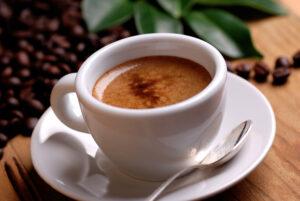Espresso and soup? A strange but helpful analogy
You might be wondering what soup and hot coffee have in common besides being a hot liquid. That is about it, but the analogy here should help clarify what an espresso bean is. Most people have fond memories or an active passion for coffee and soup. But for coffee and soup, there needs to be clarity about how to get to the end product, granted more so for espresso.

Espresso is like bouillon. It’s small and concentrated and usually diluted to make the end product. Drip coffee is like a finished stock. It can have minor additives, or it is great on its own. So what precisely makes a bean so qualified to be honored as an espresso bean?
Well, for the most part, it is the roast level. For espresso, you want to be at a medium to dark roast. Lighter roasts do not do well in espresso shots because of the coffee’s short extraction time and acidity. Darker to medium roasts are better at getting fuller flavors out at the short extraction time. The typical flavor notes of espresso of chocolate and other darker fruiter flavors play along much better with flavored syrups than, say, the brightness and acidity of light roast. Much like there are many kinds of stock and bouillon which all serve a different purpose, so there are with coffee. So why, then, the moniker of espresso coffee? Well, there are two options, one, the manufacturer has already pre-grounded the coffee to be made in an espresso machine.
The second is that this is the recommended use of the coffee. Much like the recommended recipes on the side of the stock box, you buy it is the same idea here. In fact, it might be interesting if you could try an espresso shot of the coffee and then use the same coffee in your coffee pot.

If you do attempt it, I recommend trying it black and then, if needed, adding some cream or steamed milk, then finally, sugar. The cream or steamed milk softens some of the harsher or bitter notes in the coffee without deleting the flavor you are after, so I would add it first instead of sugar.
Two recommendations to start trying espresso coffee are Illy and café Bustelo. These are not the only coffee designed for espresso, but they are a great way to get a solid foundation and perfect timing and grind size. Then once you have your technique down, you can look at other coffees to try in the espresso machine. It will be harder to fix your technique and dial in a machine if you are unfamiliar with what the end product is supposed to taste like. This is why I suggest these two. You can typically find them in either coffee houses or a friend’s house.
So then, we now have a more comprehensive selection of coffees to use in the fast, high-performance espresso machine. If you are unsure how to optimize everything to get the best shot of espresso, here are a few tips. The grind size should be about that of compact powder or around that of powder sugar. If you need a visual reference on hand, then Café Bustelo can be had for under five dollars at most grocery stores for the vacuum-sealed pack, and that’ll be a great reference. The following two items go hand in hand: single or double shot of espresso and the dosage. How many coffee grounds are we putting in, and how much coffee do we want to get out? Finally, some diagnostic tools are the speed at which your shots are pulling and how much is coming out. These will help you dial in a much better espresso shot. Best of luck to you in making or finding outstanding espresso.




Comments are closed.